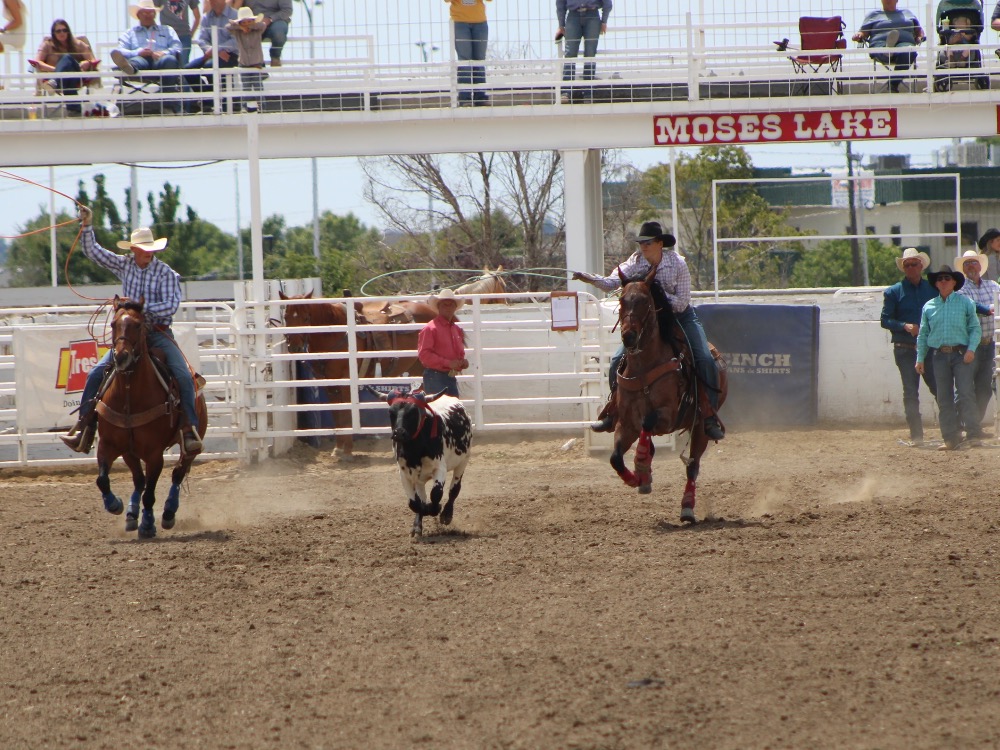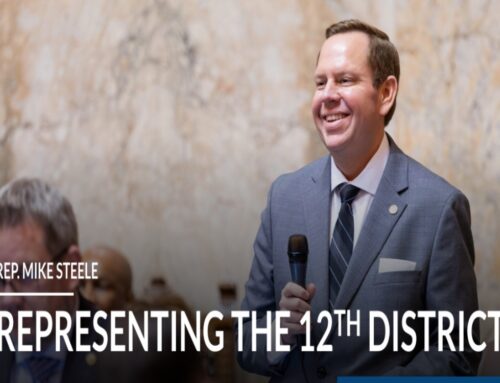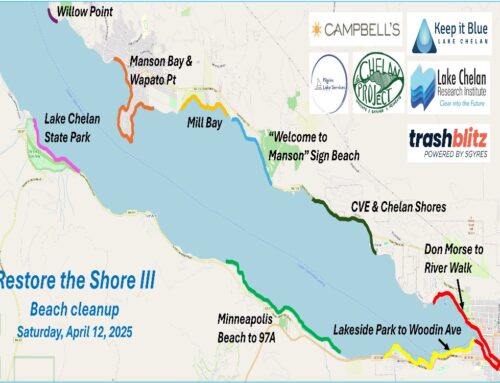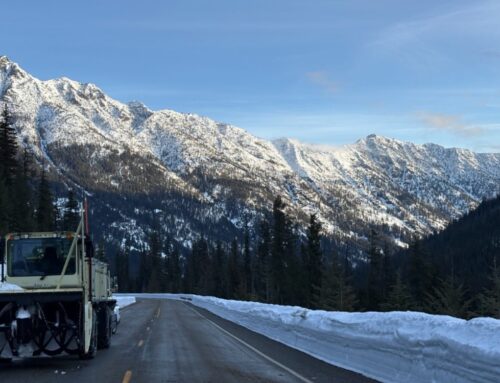Nordby, and his teammate Colby Wood, next compete in the High School National Finals
by Loni Rahm, photos by Cora Nordby
It was a whirlwind of activity for Duke Nordby the last few weeks.
Recently, Duke was among the graduating seniors from Chelan High School class of 2024. A couple of weeks prior, he was holding a shiny belt-buckle trophy as the Washington State High School Champion in Team Roping.
Duke, the heeler, along with his heading partner, Colby Wood (also class of 2024 at Eatonville) placed #1 in the Washington State High School Rodeo Finals at Moses Lake, and took the Team Roping First Place Overall for the year.
The boys next travel to Rock Springs, Wyoming for the National High School Finals. The event is held July 14-20 and will be televised on the Cowboy Channel. Duke attended nationals last year as well
This will be the boys’ final appearance in the High School Rodeo Finals. This fall, they move on to college rodeo, where Duke has big boots to fill. His dad, Larry, was a College National Finals Champion in 1990.
Congratulations to Duke, newly crowned as both an “old goat” and a state champion. We wish you the best of luck in the finals.
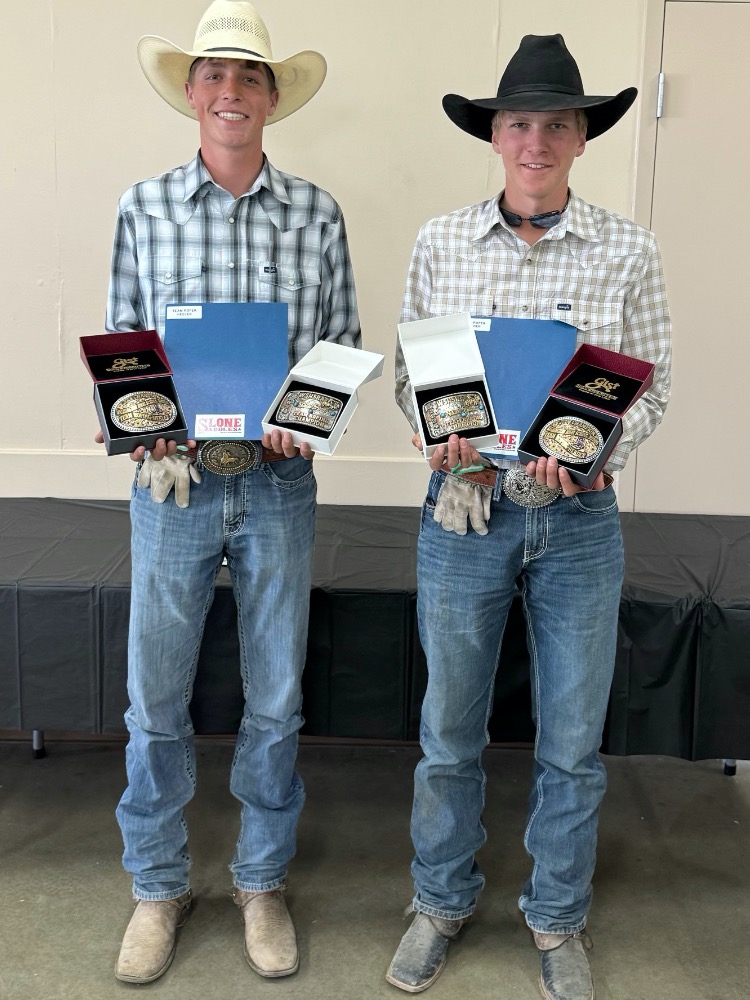
Duke (left) and Colby (right) celebrate with their First Place Belt Buckle Trophies.
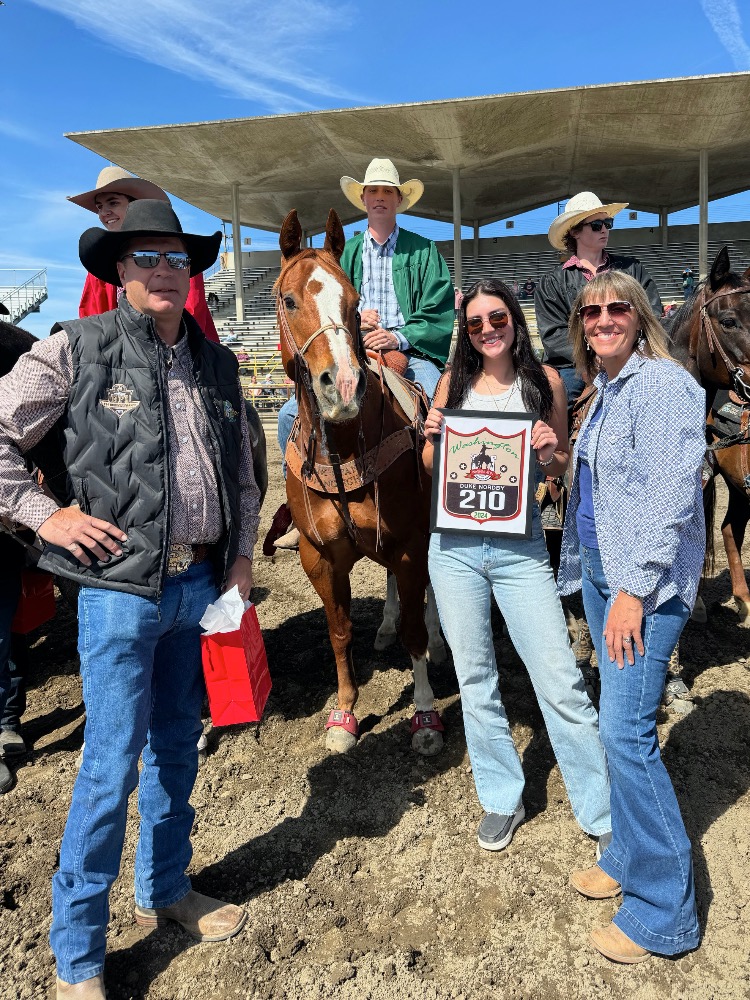
Larry, Duke on “Surf”, Beau, and Cora Nordby during the WSHSRA Senior Salute. Duke won on his bay mare Melba but shared the Senior spotlight with Surf.
.
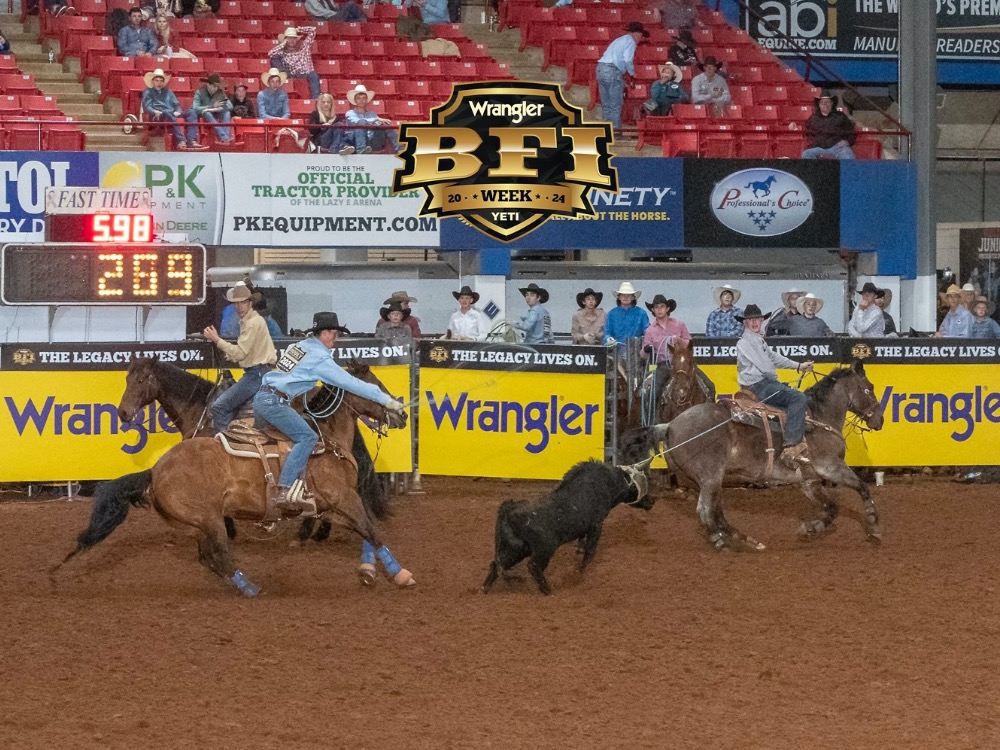
This is Duke at the Junior BFI on Melba who he will take to college with him. He’s planning to rodeo in Texas at Ranger college.
What is Team Roping?
Team roping is a timed rodeo event where two mounted contestants, called the header and heeler, work together to rope and immobilize a steer:
- The ropers start in separate boxes on opposite sides of the steer’s chute.
- The header gives the steer a head start by starting behind a rope barrier. The length of the barrier and the arena determine how far the steer can go.
- The header chases after the steer and ropes it around the horns, neck, or a combination of the two.
- The heeler then wraps the rope around the horn of their saddle, called a dally, to secure the steer and turn it to the left.
- Time stops when both riders face each other with tight ropes, and the team with the fastest time wins.


